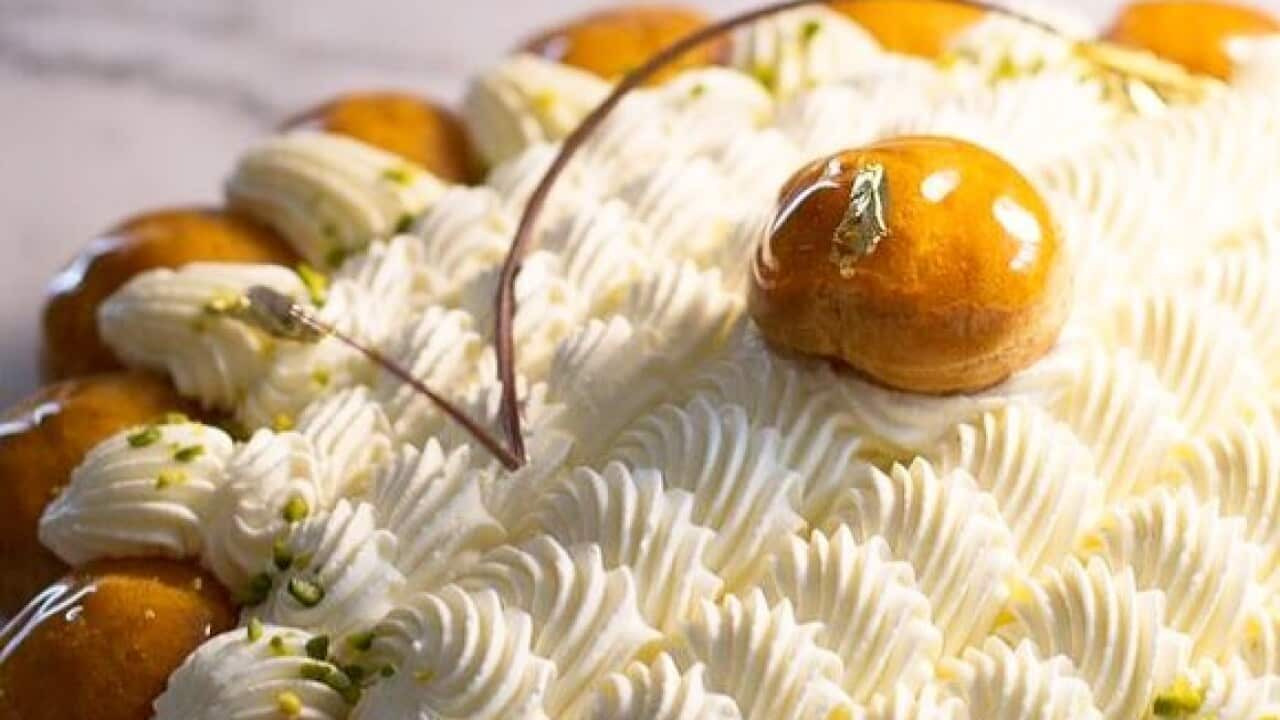Across France on May 16, even more, crusty loaves and airy pastries than usual are emerging from ovens. There are two reasons for that.
The first is that May 16 is the feast day of - one of several Catholic saints said to take a special interest in baking and bread. Many bakeries are named after the 6th-century French bishop, as is a classic French dessert.
is a pastry, custard and caramel confection that these days appears in many guises:
And here's a tip - if you buy one from a bakery, here's how to tell if it's freshly made. Usually composed of caramel-dipped choux pastry balls on a puff-pastry base, pastry cream and, often, whipped cream too, it's one dish that's best on the day it's made. "The pastry and the caramel is crisp," says Hany Bottrose, part-owner of - named, of course, after the saint. "And the caramel doesn't stick to your teeth. If you can't get the caramel off your teeth, that's how you know it's not fresh." It will still taste lovely the next day, he says, but you won't get the full effect of the crisp pastry, cracking caramel and soft custard.
If you can't get the caramel off your teeth, that's how you know it's not fresh.
And that's why the bakery makes them to order. It's a popular order, "usually with French people - or people who've had one before!"
The second reason France's bread ovens are even busier than usual today is that in Paris, and other parts of the country, the annual is on. Yes, an entire festival devoted to bread! It runs from May 13 to 19 this year, with professional competitions, a Paris festival open to the public, and more.
Despite the name, it is not just bread.
And not surprisingly - given the festival is timed to fall in the same week as the saint's day - Gâteau St. Honoré makes an appearance too.
By now, we predict you want to do one of two things - turn on the oven, or head straight to your nearest bakery. Are we right?





